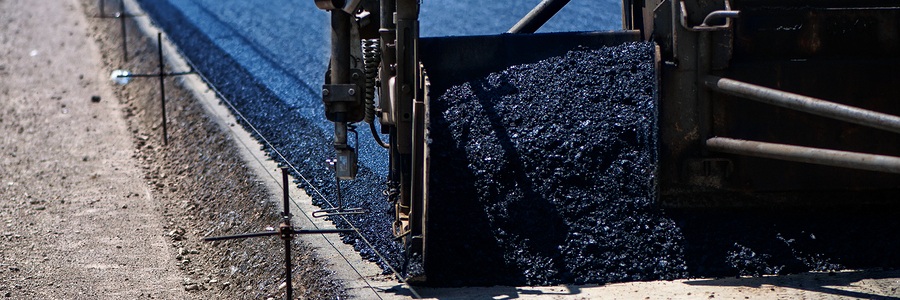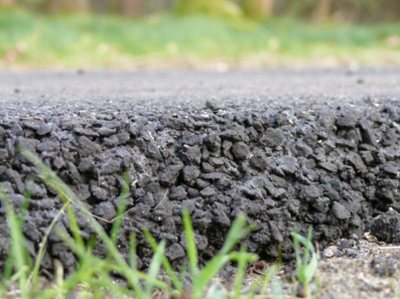Some Known Facts About A1 Professional Asphalt & Sealing Llc.
Some Known Facts About A1 Professional Asphalt & Sealing Llc.
Blog Article
The 8-Second Trick For A1 Professional Asphalt & Sealing Llc
Table of ContentsA1 Professional Asphalt & Sealing Llc Things To Know Before You BuyFascination About A1 Professional Asphalt & Sealing LlcA1 Professional Asphalt & Sealing Llc for Dummies8 Simple Techniques For A1 Professional Asphalt & Sealing LlcThe 5-Second Trick For A1 Professional Asphalt & Sealing Llc

The oil in an automobile engine is not just oil. It has a variety of ingredients to improve the vehicle's efficiency. These include polymers, thickness modifiers, heat stabilizers, added lubricating substances, and put on additives. The REOB has all the additives that remained in the waste oil along with the wear metals from the engine (mostly iron and copper).
However, by making several blends using different REOB examples and various asphalt binders, the variations mainly can be averaged out. A number of States supplied examples of recognized REOB composition to TFHRC scientists, who analyzed the samples to compare the percentage of added (known) REOB to the discovered (checked) quantity. The analyses showed a similar percent of included and discovered REOB.
The 20-Second Trick For A1 Professional Asphalt & Sealing Llc
None of those States realized that the asphalt they were acquiring had REOB. One State urged its samples had no REOB - https://www.storeboard.com/a1professionalasphaltandsealingllc.
Of the 1,532 samples examined, 12 percent included REOB, and some had significantly high levels of it at 1020 percent. The highest degree was 34 percent in a sample from Texas, which TxDOT had utilized in a patching compound. This testing likewise disclosed the visibility of phosphoric acid in 11 percent of the samples, and 2 percent included ground tire rubber.
Two years earlier at TRB's yearly conference, the Federal researchers held an REOB workshop and presented the searchings for of their lab analyses to a standing room-only group. Some companies do not specifically outlaw REOB, they do impose physical examinations that avert its useeffectively a restriction. Others do not outlaw it by spec, yet have contracts with asphalt providers to stay clear of the use of REOB
The Main Principles Of A1 Professional Asphalt & Sealing Llc
Ohio and Texas restriction levels to much less than 5 percent of the asphalt. To create a dependable examination technique that all States can utilize, the TFHRC scientists established up a round-robin test plan.
In overall, the researchers prepared and delivered 720 blends. The individuals are evaluating the samples separately utilizing the guidelines supplied by the TFHRC researchers. The round-robin testing is almost completed, and TFHRC is in the process of gathering the results. The output will be a recommended AASHTO examination technique that any type of State can embrace and utilize (a1 asphalt).
The pavement with REOB, which is situated 0.6 mile (1 kilometer) from the sidewalk without REOB, has identical subgrade, traffic thickness, and environment. Nevertheless, the segment of Highway655 with 5 to 10 percent REOB revealed significant breaking. In this instance, the existence of REOB was the identified cause of cracking at a reduced temperature levels.
"In our experience in copyright, even little amounts of 23 percent can be an issue." An area of test sidewalk in Minnesota (MN1-4) located to consist of REOB additionally broke too soon. The pavement done well for the her response first 3 to 4 years, however after that started to split. This sidewalk is likewise based on low temperature levels.
A1 Professional Asphalt & Sealing Llc Things To Know Before You Get This
The tests were not substantial, however they revealed that at levels of 6 percent or more, the tensile strength of the asphalt dropped dramatically. At a degree of 3.5 percent REOB, the variant in the physical examination techniques was higher than the impact of REOB. Actually, it was difficult for researchers to analyze whether REOB was existing.

One binder specification taken into consideration is the difference between the low temperature critical requirements temperature for stiffness (S) in the flexing light beam rheometer and the flexing beam of light rheometer creep slope (m-value) noted as Tcritical. TC = TC (S) TC (m-value). Evaluation of this parameter is still recurring. 2 independent research study teams, one from AASHTO and the various other from the Asphalt Institute, ended that even more research study is needed on making use of REOB in asphalt.
Formerly, all asphalt testing measured engineering properties such as rigidity. These examinations do not reveal what products had actually been included in the asphalt. One example gotten throughout the TFHRC research study had a very odd analysis. The example had the following examination results: Superpave PG 64-28 with a high temperature level grade of 67.3 Tcritical on the flexing beam of light rheometer was 6.7 levels Celsius.

A1 Professional Asphalt & Sealing Llc Fundamentals Explained
These results show there are weak points in the standard engineering testing protocols that might be manipulated. The manufacturer might have an economic benefit and the item passes all the standard examinations, yet the product may not be valuable to making certain lasting performance. To address this concern and the growth of new asphalt additives and extenders, TFHRC is beginning a research study program to utilize handheld spectroscopic devices, x-ray fluorescence spectroscopy, and Fourier change infrared spectroscopy to make it possible for evaluations to be carried out in the field as opposed to needing to take samples back to the laboratory.
Report this page